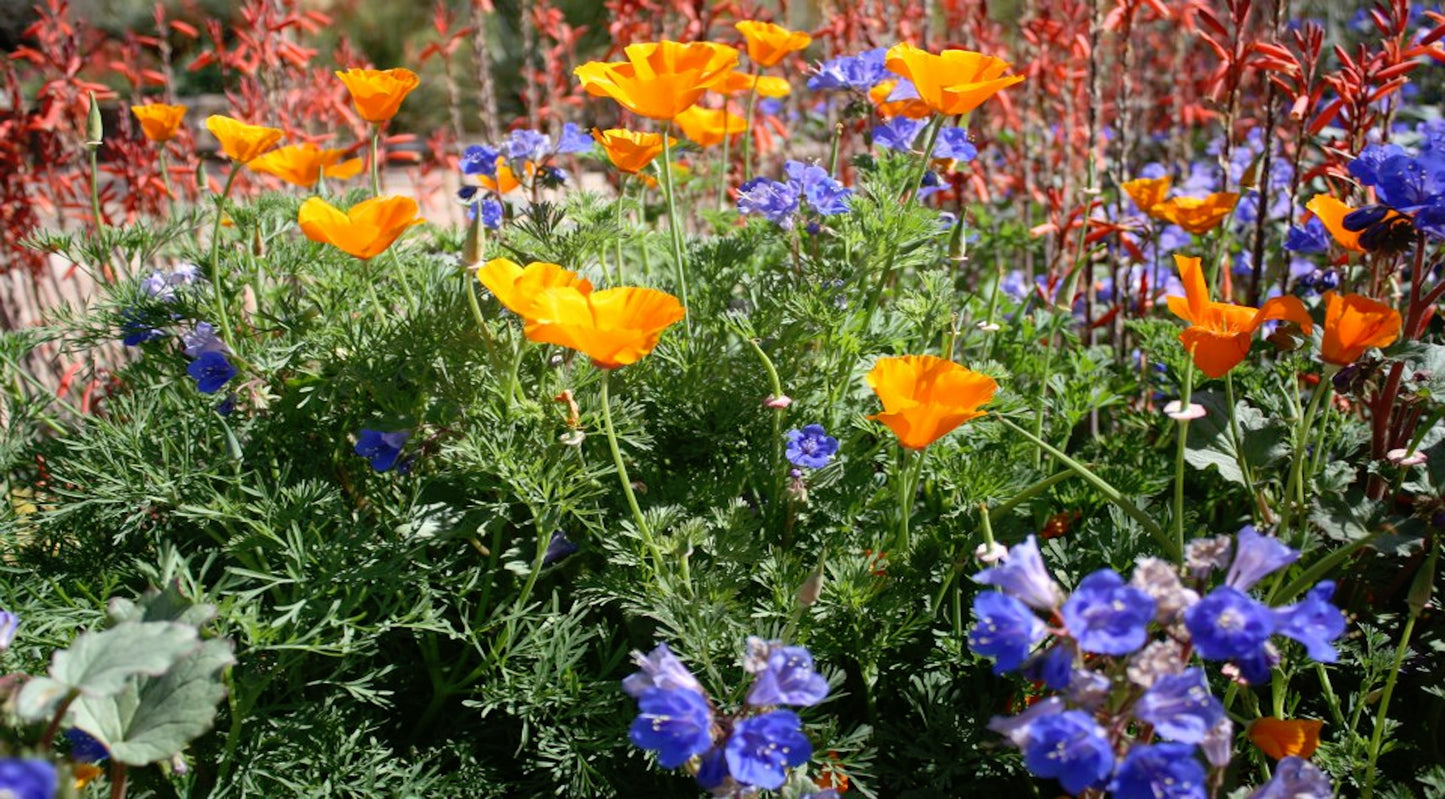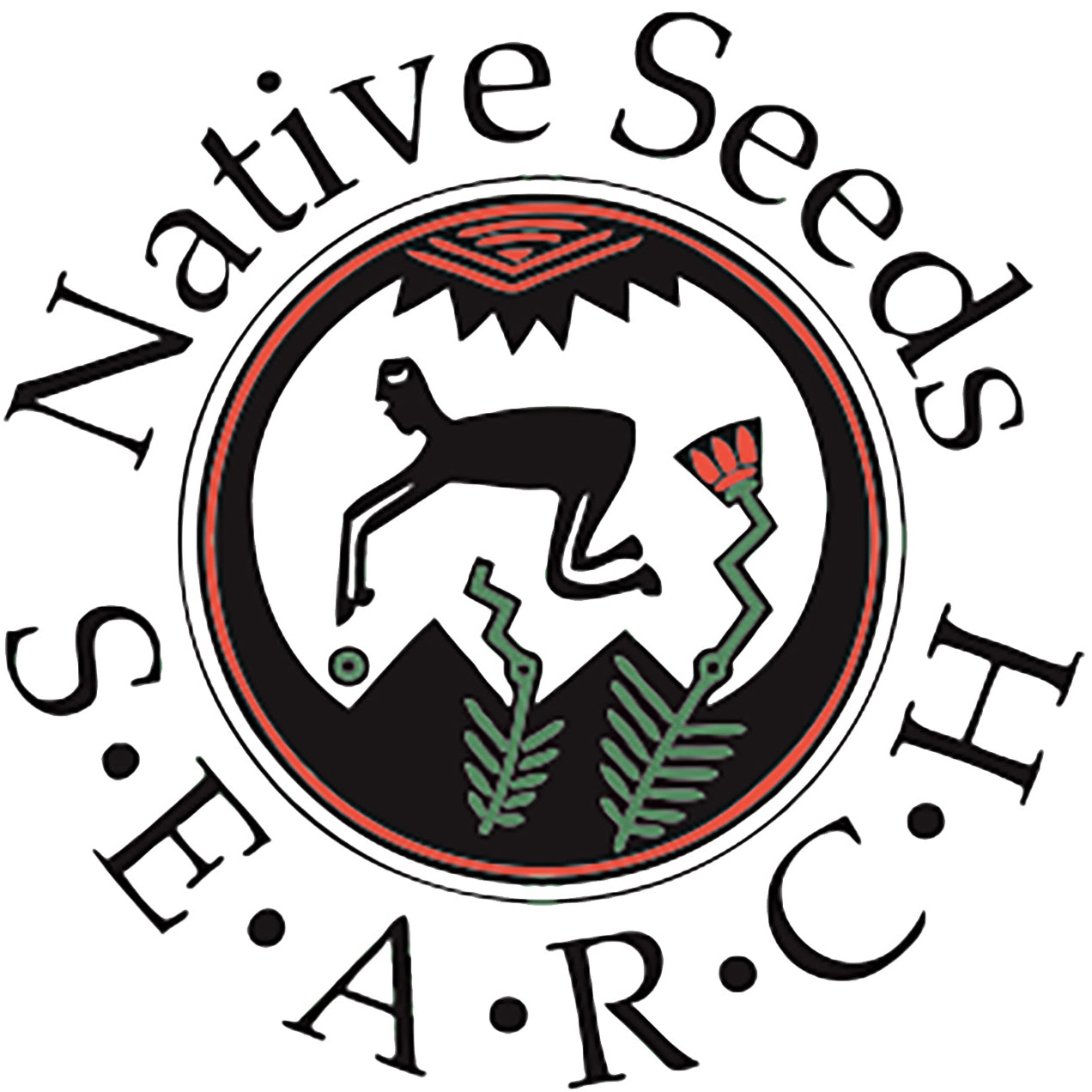
Originally By Melissa Kruse-Peeples, Education Coordinator. Published October 16,2013.
Updates By Laura Neff, Education Assistant.
Spring wildflower season is one of the desert’s most colorful periods. But planning for those multicolored displays in the spring requires planning in the Fall. The prime time to plant spring flowers in the low desert areas of southern Arizona is during late September through early December. Most spring blooming wildflowers benefit from the cold temperatures of winter and begin their life cycle when the winter rains come.
Native Seeds/SEARCH offers many wildflower seed choices for your garden. Seeds are available from our website and retail store in Tucson. We have favorite perennials such as Globemallow, Desert Marigold, and Parry's Penstemon. Colorful annuals include local favorites Mexican Gold Poppy, Desert Bluebells, and Arroyo Lupine. Mix and match your favorite varieties for a custom mix of shapes, sizes, and colors. There are also many mixes available designed for different regions or purposes like attracting butterflies. Mixes are useful because while wildflowers are simple to plant and maintain once they germinate and mature, they can be picky when it comes to conditions they may require that are out of human control. These conditions might include soil temperature or humidity. It is why one year you may see a lot of yellows and oranges while another year you may see more purples and blues during Spring bloom. Mixes help ensure that you will see some color in your space.
Top: Desert Globemallow, Bottom (Left to right): Desert Bluebells, Parry's Penstemon, Desert Marigold
While enjoying your flowers remember that they also serve an important function for our ecosystem. Wildflowers provide food for bees, butterflies, and hummingbirds and are important pollinators for native plants and are required for bountiful vegetable and fruit harvests. Wildflowers are a great option to attract beneficial pollinators to your garden.
Planting wildflowers is easy and most will reseed themselves or are perennial giving you the benefits season after season. Choose a location in the sun as most wildflower prefer sunshine. Hand broadcast the seeds evenly. Mix with sand to ensure a more even distribution of seeds, which also provides a convenient way to mark the parts of the site where you have broadcast. Compress the area with your hands to cover the seeds with ½ inch or gently rake over some loose soil. If available, cover the area you seeded with a light layer of yard debris (leaves, grass clippings etc.) to make the ground look undisturbed as possible to camouflage the seeds from hungry birds that may be lurking.
To speed up your seed germination lightly water and keep the soil moist for the first few weeks. Most wildflowers prefer well drained soils so avoid water pooling on your site. Alternatively you can wait for the winter rains. You will want to give your area a good soaking every few days if the winter rains are insufficient or late in arriving. Once established and blooming native wildflowers generally do not need much water.
Lastly, sit back and enjoy the colors that will come year after year around this time.

